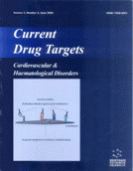Abstract
Arthropods in at least 23 different families or orders, distributed between two classes (Insecta and Arachnida), feed on vertebrate blood. They are able to do this despite constraints imposed by a sophisticated array of hemostatic defenses, due to the presence of a wide range of antihemostatic molecules in their saliva, including vasodilators, antiplatelet factors, and anticoagulants. Vasodilators include amines, prostaglandins, peptides, proteins, and even a mechanism to store large amounts of nitric oxide and deliver it into the skin. Platelet aggregation inhibitors include nitric oxide, prostaglandins, apyrase, molecules that sequester ADP, and a range of peptides and proteins that interact specifically with integrin receptors. Anticoagulants include a wide variety of inhibitors that target thrombin and factor Xa, as well as proteins that disrupt the “tenase”, prothrombinase, and tissue factor / FVIIa complexes. The potential complexity of saliva is illustrated with the example of Rhodnius prolixus, which contains a large array of compounds, many of which affect more than one target in the hem ostatic process. Finally a brief discussion of a new approach (sialomics) to the discovery of pharmacological agents in arthropod saliva is presented.
Keywords: arthropods, ectoparasites, vascular system, hemostasis, platelets, blood-feeding
 1
1













